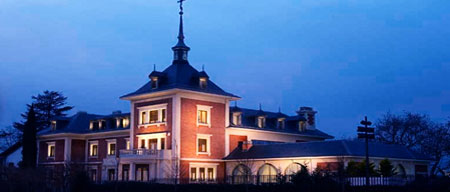Home > Study in Spain > City Guide > Pamplona
Pamplona City Guide
- Places of Interest
- Maps
- Getting to
- Getting around the city
Pamplona is the capital of the fascinating region of Navarre. Although best known for its San Fermín festivities, there is much more to Pamplona than simply this controversial festival. A beautiful cathedral and an ancient citadel are just a few of the reasons why visitors continue to pour into Pamplona at all times of the year. The older buildings in the city are constructed with dark stonework, giving the city a foreboding, mysterious atmosphere, totally different to cities in central and southern Spain.
Pamplona was founded by Pompey the Great in 74-75 BC, and it is from this founder that it was given its original name Pompaelo, later to become Pamplona. The city came under Visigoth, Moorish and Frankish rule, and had its city walls famously destroyed by Charlemagne in 778. During the late 8th century, Pamplona failed to permanently secure its rule over the Basque region and acted as simply a kind of fortress rather than a city. In the 18th century, Pamplona was beautified and had its urban services improved, making it more like the city we know today.
Whether you are in Pamplona to run with the bull at Los Sanfermines, marvel at its beautiful architecture, or simply to wander along its narrow streets and stop in one of the city's many bars or restaurants to sample a pintxo, this unique city steeped in history and conflict is a fascinating place to be. There is so much to be enjoyed in Pamplona that you are bound to fall in love with this mysterious, eerily beautiful place.
Places of Interest
Cathedral
A late medieval gothic masterpiece with a neo-classical façade, added in the 18th century. Inside, treasures include a silver-plated Virgin Mary and the 15th century tomb of Carlos III of Navarra and his wife Doña Leonor. A highlight is to be found in the Gothic cloister, with beautifully delicate stonework decoration.
Ciudadela
A classic example of Spanish Renaissance Military Architecture. Originally built to protect the city from military invasions, and constructed in the shape of a star, now it stands at the heart of a beautiful park, giving the city a green landscape.
Museums
Museo de Navarra
A former medieval hospital, this eclectic museum contains a variety of archaeological finds and a selection of artwork, including Goya's Marqués de San Adrián.
Museo Oteiza
Slightly northeast of Pamplona, in the rural setting of Alzuza, you can find almost 3000 pieces by the Navarran sculptor, Jorge Oteiza. The gallery also incorporates the artist's home.
Parks
Pamplona is full of parks where you can go for a stroll or simply relax in the tranquil oasis away from the city they create.
Taconera Park
The oldest park in the city; its designs date back to the 17th century. Wide pedestrian paths and sculptures.
Media Luna Park
Perfect for relaxing or taking a walk in the northern part of the city.
Yamaguchi Park
Has a beautiful Japanese garden.
Maps
Getting to Pamplona
By Air
There is an aiport about 7km away at Noáin, which is well connected with the city.
By Bus
The bus system has links all over Navarre and the rest of Spain.
By Train
The train station is situated near the centre of town and has links to all over Spain. For southern Spain, you must change in Madrid.
Getting around the city
Pamplona is very compact, so transport shouldn't really be necessary, but there is a bus system which runs all the through the night during Los Sanfermines, which only costs 1€.
Tips
Aside from the obvious danger of the bulls, Los Sanfermines is a time rife with pickpocketing, so watch your belongings. Footwear should also be carefully considered as the streets can be full of broken glass. Aside from this, Pamplona is a relatively safe city, with low crime statistics.
Pamplona is listed as one of the cities in Spain with highest standard of living, although of course this also pushes the cost of living up somewhat. Be prepared to pay a bit more than in cities like Salamanca or Granada, where the cost of living is lower.

